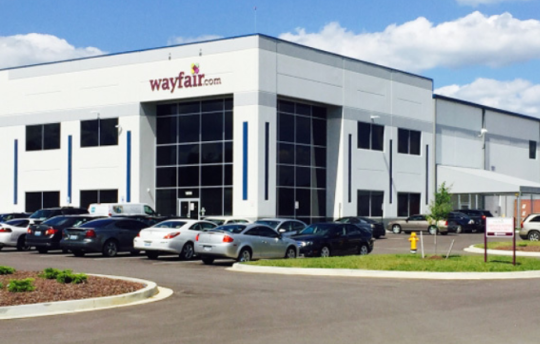
Wayfair recently opened its first
brick-and-mortar store in Florence, Ky., following in the footsteps of many
previously “online-only” brands. The new store will be 20,000 square feet and
will be located within a new 260,000-square-foot distribution center designed
to handle
the company’s “excessive” return rate.
But the new store comes with a few questions of its own,
especially since many perceive the location as
an outlet store for selling off
excess merchandise. Does Wayfair require a physical presence if
it ever wants to gain consistent profitability and better handle its
excessive returns, and if so, how should it be handling its
brick-and-mortar expansion?
The RTP team
shares examples of online-only retailers that made the jump to
brick-and-mortar successfully (or unsuccessfully), and how Wayfair and other
retailers can learn from those experiences.
Debbie Hauss, Editor-in-Chief: I have UNTUCKit on my mind, since I just saw the
store in the Prudential Center mall in Boston while attending eTail East. Starting in an apartment in Hoboken, N.J. in 2011 as a
pure play, then opening its first brick-and-mortar store in 2015, UNTUCKit
now operates 35 stores. This brand has done a phenomenal job rethinking a
product category — the men’s shirt. Co-founder Aaron Sanandres spoke on an
Innovation panel during the 2018 Retail Innovation Conference, discussing how to disrupt a traditional product category. UNTUCKit is definitely a leader when it comes to
disruption. In Wayfair’s case, right now it looks like the company is just
using the store to unload excess and returned merchandise. While it may
achieve that goal, I don’t think the approach will translate to many other
successful store openings for Wayfair.
Adam Blair, Executive
Editor: Warby Parker has enjoyed notable success
going from online to brick-and-mortar; the retailer plans to operate 90 stores
by the end of 2018. The company’s secret weapon has always been a mindset that
values in-person retail as a unique learning opportunity. At IRCE in June, co-founder/co-CEO Dave Gilboa recalled
the retailer’s early days, when the Warby Parker “store” was a co-founder’s
Philadelphia apartment. There was no POS as such; if customers wanted to buy
something, they had to log on to the Warby Parker site to pay. Later, the
retailer established a showroom in its corporate offices that got so much
traffic, the building’s landlord threatened to evict the company for clogging
up the elevators. Despite these challenges, Gilboa and company consistently saw
the benefits of having a physical space for retail: “We learned so much from
these face-to-face conversations, and we got feedback that we would not have
gotten from a purely digital relationship.”
Glenn Taylor, Senior
Editor: Casper’s recent
expansion is the first example I thought of here, given that the company just
made the decision to open
up to 200 stores over the next three years. The company selected a
strategic time to begin its mass expansion, particularly as top competitor Mattress Firm mulls bankruptcy and
heads down the track to inevitable store closures. Casper toyed with the idea
of physical stores for a few years, trying out various formats including
showrooms, pop-ups and in-store partnerships before opening its first permanent
location, an
experiential store in New York City. What sets Casper apart in these
instances is that it hasn’t been afraid to experiment with different styles,
and it has offered value with each location. For example, the company opened
“The Dreamery” in SoHo, where shoppers can walk in and pay $25 to take a nap in
a private area on a Casper mattress. I think if Wayfair really wants to build
out a brick-and-mortar model that works, it’s going to have to showcase its
best, most comfortable furniture items as a way to get shoppers excited about
the purchase.
Bryan Wassel,
Associate Editor: The path from e-Commerce to omnichannel has been steady
for Sugarfina, which has expanded with its status as a luxury candy
retailer in mind. The brand now has more than 50 locations across North
America, with an a Hong Kong store in the works, and its
store-within-a-store partnership with Nordstrom has
proven beneficial. The two retailers share similar clientele, and the
cooperation helps Sugarfina generate additional exposure without much overhead.
Nordstrom, as an older, more established retailer, has a larger customer base
that may be interested in visiting Sugarfina’s standalone store after they try
its products for the first time. While there are downsides to the
store-within-a-store model, such as other companies handling customer
interactions, the benefits for a young omnichannel brand that’s just getting
established can’t be ignored.






